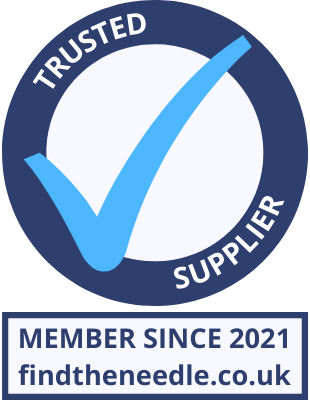 Add My Company
Add My Company
Sign In
Poisons and first aid treatment
11-09-2023

Over 160,000 people attend hospital per year in the UK as a result of poisoning. In this blog we?ll look at the sources, the signs & symptoms plus the first aid do?s and don?ts of treating a casualty who has been poisoned.
Children are more at risk of poisoning and suffer more damage due to their smaller bodies, comparatively larger organs and their habit of investigating and experimenting with what?s around them without understanding the risks.
What are poisons?
Poisons are any substance that a person is exposed to that can injure their health or endanger their life. They can enter the body by breathing, swallowing, injecting or absorbing through the skin.
The dose of poison will affect a casualty differently depending on their age, size, general health, prescribed medications and whether they have any underlying medical conditions. Some poisons in small amounts may make us feel ill, nauseous, breathless or have a skin reaction. The toxicity (strength) of the poison will also have a varying impact on the casualty as even a smaller dose might be quite dangerous to their health.
How do poisons affect us?
Poisons affect us in different ways depending on the dose, toxicity and method of entering the body.
Breathing in poison will affect the nose, mouth, airway and lungs and may then be transferred elsewhere including the heart, brain and other vital organs.
Swallowing a poison will impact the digestive tract including the mouth, oesophagus, stomach and bowel. Swallowing may often result in casualty vomiting as their body tries to eject the poison from their system. This can cause further damage as it travels back up to the mouth to be ejected.
Injecting a poison will enter the bloodstream and affect the heart and all other organs more quickly so signs and symptoms will often be more obvious. Injecting is not always deliberate as it could be from broken glass, a discarded syringe, a sting from a poisonous plant or venom from an insect, snake or sea creature.
Absorbing a poison through your skin will usually show a local reaction on the skin. However, if it?s a large chemical in the atmosphere, this can quickly have an impact on a person?s health as the skin is the largest organ in the body. It is also a risk to you if you then enter the ?poisoned atmosphere?.
The signs and symptoms of poisoning
Signs and symptoms will vary with the method of poisoning, toxicity and dose. Typical signs and symptoms may include some of the following:
Feeling and being sick
Drowsiness and fatigue
Stomach pain
Headache
Difficulty breathing or abnormal breathing
Sudden change in their heart rate or rhythm
A pinhole or overlarge pupils in the eye
Fever or chills
Skin rash, scarring or burns
Extra salivating
Cyanosis ? blue lips or skin around the mouth
Seizures or fits
Anaphylaxis
Loss of consciousness
Coma
First Aid for poisoning
First aid for someone who has been poisoned needs to be assessed quickly and carefully as their condition may change rapidly depending on the poison, dosage and method of entry into the body.
If they are unconscious, place them in the recovery position, phone 999/112 and be alert to the potential for them to vomit. If they do vomit, make sure their airway is clear afterwards and that they are breathing.
If they are conscious, gather useful information that you can pass on to the paramedics such as:
What the poison is
When it was taken
Why it was taken, accidentally or deliberately
How it was taken (e.g. swallowed, chewed, inhaled, injected or absorbed)
How much of it was taken
What are the dos and don?ts of first aid for poisoning?
Do:
Always assess for danger before dealing with an incident so you don?t become the second casualty!
Ensure you wear protective clothing and/or equipment (gloves, goggles, apron etc) if you are dealing with a major or fluid-based poisoning.
Always reassure your casualty and keep them calm and warm. Stress and anxiety will spread the poison throughout the body quicker and may result in vomiting.
Place an unconscious casualty in the Recovery Position.
Always try and identify the poison, take a photo or sample if safe to do so
Be alert to vomiting. Avoid contaminating yourself. Take a sample of the vomit to the hospital with them if possible. You can do this by scooping some up in a surgical glove and then in another glove, or use a vessel of some sort suitably wrapped afterwards.
Encourage them to spit out any poisonous material in their mouth. If they?re conscious and can tolerate a bit of water, get them to rinse their mouth then spit it all out.
Provide a source of fresh air if they have inhaled a poison.
Irrigate a poison to get it off the skin or out of the eyes. Ensure it falls off the body and not spread to another part of the body such as the hands, ears etc.
Always try to remove contaminated clothing if it is not stuck to the skin. This will allow you to wash the skin underneath the clothing to avoid any further chemical burning or skin irritation.
Be prepared to do CPR if they stop breathing. This may mean compression only if they have swallowed or inhaled a poison. Be prepared to do action for vomit whilst doing compressions.
Don?t:
Don?t induce vomiting
Don?t put yourself at risk
Don?t handle the poison without appropriate and adequate PPE. Surgical gloves are not always appropriate for some chemical poisons.
Don?t leave the casualty alone in case their condition worsens.
What are the most common poisoning incidents?
Food poisoning, most often caused by eating food that is not cooked correctly, out of date or contaminated. Treatment if not severe is to rest, drink plenty of fluids and take pain relief if appropriate. If in doubt, or if symptoms worsen, seek medical help.
Alcohol poisoning, overindulgence over a while (binge drinking) can lead to vomiting, confusion, hypothermia, brain damage and death. Treatment for alcohol poisoning is to phone 999 and try to keep the casualty awake and sitting up. Keep them warm and give them some water if they can drink it. If they become unconscious, put them in the recovery position. Do not leave them alone or try and ?sober them up? with coffee or food as this may cause more damage.
The hidden poison that kills ? carbon monoxide
Carbon monoxide poisoning ? this is an odourless gas that can make you unwell or kill you if you?re exposed to high levels. Sources vary but mainly occur through badly maintained heating systems, open fires and leaking boilers. It causes a change in the oxygen level in your bloodstream causing cell and eventually organ failure. Early signs are a tension-type headache, dizziness, shortness of breath, fatigue and a high temperature.
More prolonged or higher exposure over a short or long time can lead to confusion, difficulty concentrating, emotional changes, chest pain, vertigo, seizures and unconsciousness. Treatment is getting the casualty into a fresh air environment then urgent evacuation to the hospital. Monitor the casualty whilst waiting for the ambulance.
What else should I know about poisons as a first aider?
Self-harm accounts for 25% of poisonings in some age groups
SEPSIS is always a possibility and should be considered. Read more about sepsis.
Taking samples is encouraged but not always necessary if the poison is in situ. Paramedics have access to a database of poisons information on their phones and can give very specific treatment for poisons immediately.
The Control of Substances Hazardous to Health Regulations (COSHH) is the legal requirement for all businesses to identify potential substances of harm in a workplace. It is a useful source of documentation that includes initial first aid for poisoning with specific substances including workplace exposure limits. Every staff member should have access to these documents.
For more information on Poisons and first aid treatment talk to ABC Training Services Ltd
Enquire Now
List your company on FindTheNeedle.

